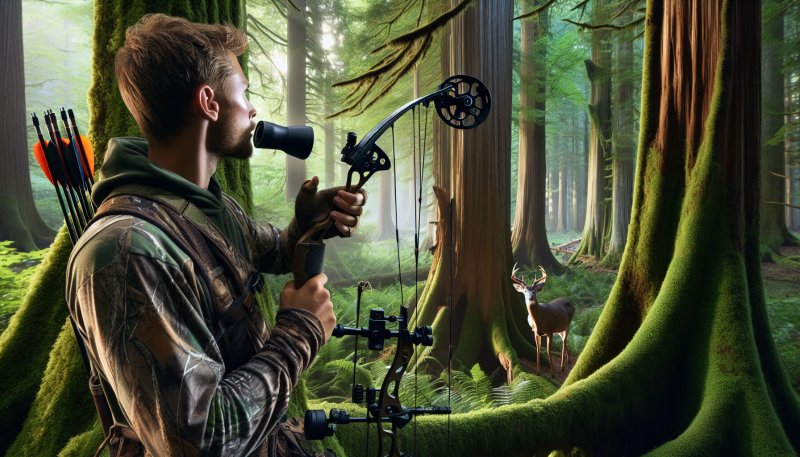Choosing the right camouflage pattern for your hunting needs is crucial to staying hidden and increasing your chances of success. With so many options available, it can be overwhelming to decide which pattern is best for you. Here are a few tips to help you make the right choice.
Consider the environment you will be hunting in. Different camouflage patterns are designed to blend in with specific surroundings, such as forests, fields, or marshlands. Make sure to choose a pattern that matches the terrain where you will be hunting to stay concealed from your prey.
Think about the time of year you will be hunting. Some patterns are designed to mimic the colors of different seasons, such as green for summer or brown for fall. Choosing a pattern that matches the time of year will help you blend in seamlessly with your environment.
Take into account the type of game you will be hunting. Different animals have different visual capabilities, so choosing a pattern that is effective at concealing you from your specific target species is important. For example, deer may see color differently than turkeys, so choosing a pattern that works well for the animals you will be hunting is essential.
Check for Breathability and Comfort
One important factor to consider when buying hunting camouflage is the breathability and comfort of the fabric. Being out in the wilderness for long periods of time can be physically demanding, so you want to make sure that your camouflage is made from a material that allows your skin to breathe and doesn't trap moisture.
There are several types of fabrics that are known for their breathability and comfort, such as cotton, polyester, and blended materials. Cotton is a natural fabric that is soft and breathable, making it a great choice for hunting in warmer weather. Polyester is a synthetic fabric that is lightweight and quick-drying, making it ideal for hunting in wet or humid conditions. Blended materials combine the benefits of both cotton and polyester, providing a comfortable and durable option for all types of hunting environments.
When trying on hunting camouflage, pay attention to how the fabric feels against your skin. Make sure it isn't too tight or restrictive, as you'll want to be able to move freely and comfortably while out in the field. Look for features like mesh panels or vents that can help improve airflow and regulate your body temperature, keeping you cool and comfortable throughout your hunting trip.
Consider Your Environment and Terrain
When it comes to buying hunting camouflage, one of the most important factors to consider is your environment and terrain. The type of camouflage you choose should be tailored to the specific area where you will be hunting. For example, if you are hunting in a dense forest, you will want camouflage that mimics the colors and patterns of the trees and underbrush. On the other hand, if you are hunting in open fields, you will want camouflage that blends in with the grasses and shrubs.
Another aspect to consider is the season in which you will be hunting. Different seasons bring different colors and patterns to the landscape, so it is essential to choose camouflage that aligns with the current surroundings. For example, in the fall, you may want to opt for camouflage with brown and orange tones to blend in with the changing leaves. In the winter, you may want camouflage with white and gray tones to blend in with the snow-covered terrain.
Consider the time of day that you will be hunting as well. If you will be hunting during dawn or dusk, you will want camouflage that blends in with the low light conditions. Look for patterns that offer a mix of dark and light colors to help you disappear into the shadows. Additionally, consider the weather conditions. If you will be hunting in rainy or foggy weather, choose camouflage that is water-resistant and can help you stay dry and comfortable. By taking these factors into account, you can ensure that you have the right camouflage to help you effectively blend into your environment and terrain while hunting.
Pay Attention to Size and Fit
When it comes to buying hunting camouflage, one of the most important things to pay attention to is the size and fit of the clothing. Ill-fitting camouflage can not only be uncomfortable, but it can also hinder your movement and make it easier for game to spot you. Make sure to take accurate measurements of your chest, waist, hips, and inseam before purchasing any camouflage clothing. This will help ensure a proper fit and maximum comfort while out in the field.
Additionally, be mindful of the layering you may need to do underneath your camouflage clothing. If you plan to wear multiple layers in colder weather, you may want to size up to accommodate for the extra clothing. It's also a good idea to try on your camouflage clothing with your hunting gear to make sure everything fits together seamlessly. Remember, the goal of camouflage is to blend in with your surroundings, so any extra bulk or tightness could give you away.
Lastly, consider the type of terrain you will be hunting in when selecting your camouflage size and fit. If you'll be hunting in dense brush, you may want a more form-fitting camouflage to prevent snagging. On the other hand, if you'll be hunting in open fields, a looser fit may be more comfortable and allow for better range of motion. Ultimately, the right size and fit of camouflage clothing can make a big difference in your hunting experience, so take the time to find the perfect fit for your needs.

